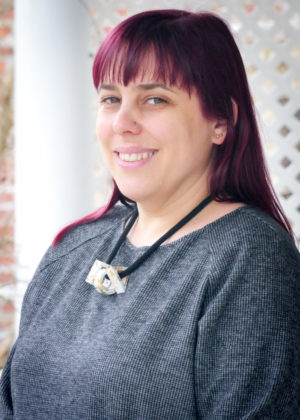Scotland’s first university reimagines its past
The University of St Andrews’ flagship Wardlaw Museum will reopen in April following a £2.1 million overhaul.
The Wardlaw Museum (formerly known as MUSA) is named after the University’s founder and first Chancellor Bishop Henry Wardlaw. More than £1.3 million of the total required for the extension and remodelling has come from philanthropic donations. Newly named galleries as part of the extension appeal will include The Drysdale Gallery, with thanks to alumni Arthur and Nicola Drysdale, and The Albany Gallery, with thanks to alumnus Michael Buchanan.
Over the last two years, the Museum has been completely reimagined. The makeover delivers a museum 50% larger, with new displays in four thematic galleries, a temporary exhibitions space, and a remodeled entrance area and shop. This space will provide an exciting cultural venue at the heart of St Andrews’ cultural quarter – which now includes the Laidlaw Music Centre, Byre Theatre, and redeveloped Younger Hall.
Dr Catherine Eagleton, Director of Museums at the University, said: “The new museum will take visitors inside the University. Exhibitions will draw on the 600-year history of the University as well as the world-leading research being done at St Andrews. We have ambitious future plans for exhibitions, digital projects, and research and teaching at the museums, and plan to innovate and experiment and continuously push ourselves to surprise audiences.”
The University’s collections include around 115,000 objects of national and international interest. Visitors will soon be able to see a broader selection in the Wardlaw Museum, including some that have not been on display before, including a Thai silver zodiac bowl, prototype LEDs developed in the 1970s, beautiful models of plants and flowers, and a NASA telegram that accompanied moon rock samples sent to the University for analysis.
An exciting programme of temporary exhibitions are already planned for the year ahead, including a photographic exhibition of 100 women by renowned photographer Anita Corbin. There will also be a display curated by students on the University’s renowned Museums and Galleries course, featuring a book created by photographer Julia Margaret Cameron in collaboration with the poet Alfred, Lord Tennyson in 1875.
 Dr Eagleton (pictured) continued: “Over the next three years we will deliver an exciting programme of events and educational activities, and the Wardlaw Museum will be open seven days a week. People can keep an eye on our social media and website, or sign up to our email newsletter for the latest information on what’s coming up.”
Dr Eagleton (pictured) continued: “Over the next three years we will deliver an exciting programme of events and educational activities, and the Wardlaw Museum will be open seven days a week. People can keep an eye on our social media and website, or sign up to our email newsletter for the latest information on what’s coming up.”
The museum collections of the University of St Andrews are a vital part of the history and heritage of Scotland’s oldest university, including the Bell Pettigrew Museum of Natural History, which displays important Victorian zoology specimens including several extinct species. An exhibition at the Wardlaw Museum in summer 2020 will feature artwork by schoolchildren from across Fife inspired by the natural history collections.
The University of St Andrews is Scotland's first university, founded in 1413. Like the University, its Museums are rooted in and draw inspiration from this 600-year history of research and teaching, and the pursuit of knowledge for the common good.
The Museums’ collections are of national and international interest and importance and consist of around 115,000 artefacts and specimens.
Museum collections are featured at the Wardlaw Museum and the Bell Pettigrew Museum, stored and studied in a dedicated Collections Centre, displayed across the University campus, and lent for exhibition nationally and internationally.
Issued by the University of St Andrews Communications Office.